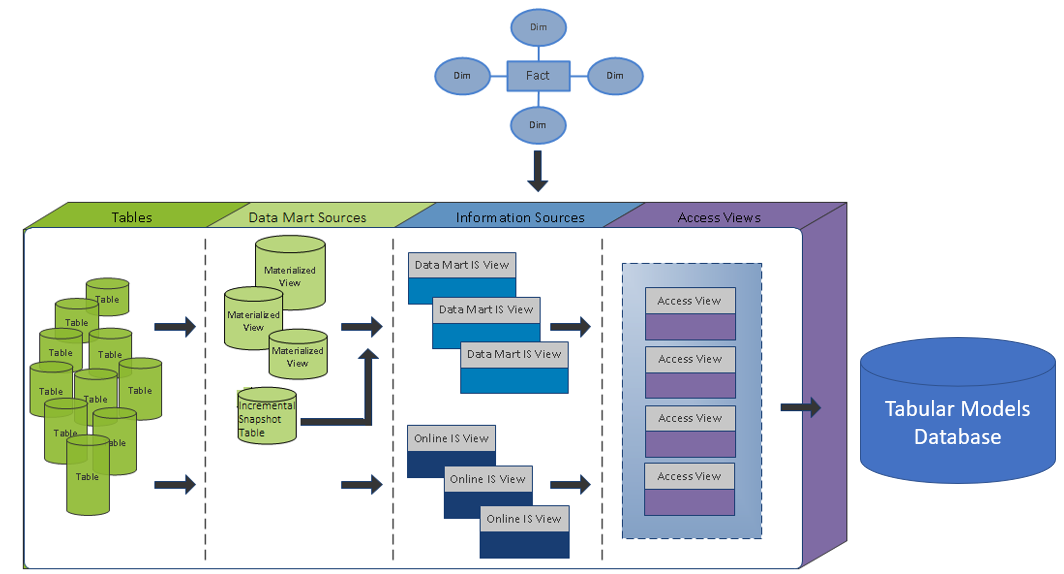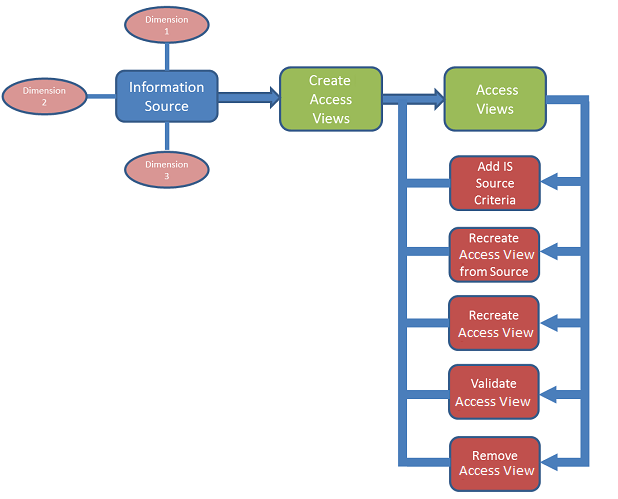Access Views¶
Information Sources support data access via online or data mart specific fact and dimension views.
Access Views are created on demand by an end user and leads to creation of a view layer on top of existing fact/dimension source views. The created views serve as general read interface that an be used when working with integrations. The Access Views are also the main sources for the Tabular Modles within IFS Analysis Models.
Instead of building one tabular model based on online access views and another model based on data mart access views, it is more convenient to use a general view name name and that is where the Access Views come into play.
Use this page when you want to know more about how to create and manage Access Views.
Overview¶
Access Views represent an extra access layer and can be described like this:

- Access Views are used as the source for loading the Tabular Models specific data layer in SQL Server.
- Access Views are created in IFS Cloud via the Information Source page. Please refer to the Creating and Managing Access Views section.
- An Access View references either an Online or a Data Mart specific access view. An Information Source consists of a fact and one or more dimensions and each Information Source can support two access types, Online or Data Mart, by providing different access type views.
- An Access View has the same name independently of the Information Source access type.
The functionality related to Access Views can be described with the following overview.

The starting point for creating the Access Views is an Information Source.
When the Access Views have been created, the Tabular Models framework can be setup, necessary model objects can be deployed to the SQL Server database and then a data load can be performed where the Access Views are used as sources when transferring data from IFS Cloud database to the SQL Server database.
The following functionality is also available:
- Add Information Source specific criteria, with the purpose to control the amount of data retrieved by an Information Source specific Access View.
- Recreate an Access View based on the original source, a fact or a dimension view.
- Recreate an Access View with respect to current definitions.
- Validate an Access View in order to find out if changes have been made to the source view used when creating the Access View.
- Remove an Access View, e.g. remove the view from the database but not from the Access View entity.
Creating and Managing Access Views¶
For details about how to create and manage Access Views, please refer to the Creating and Managing Access Views page.
Diagnostics¶
For details about Access Views diagnostics, please refer to the Access View Diagnostics page